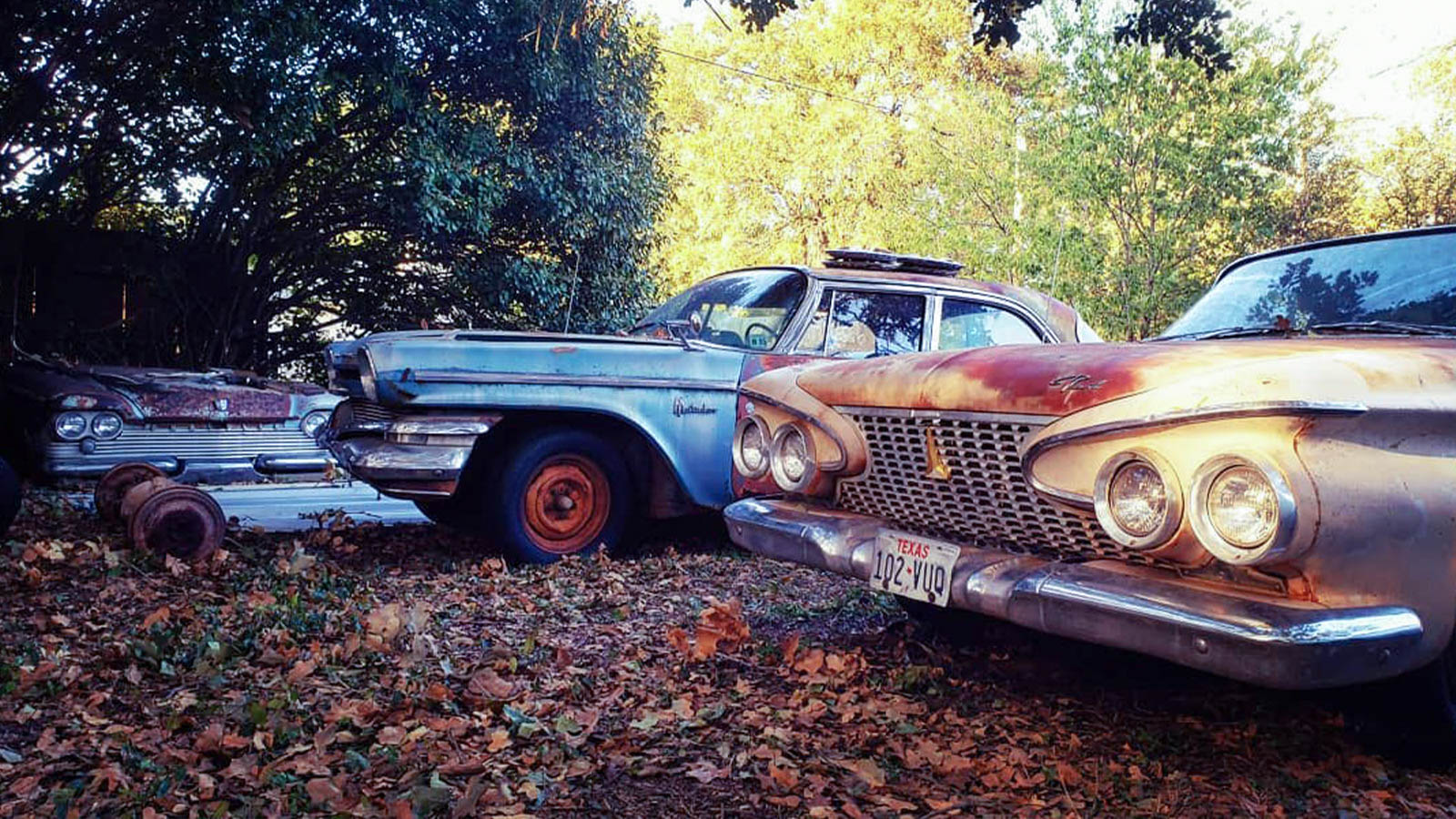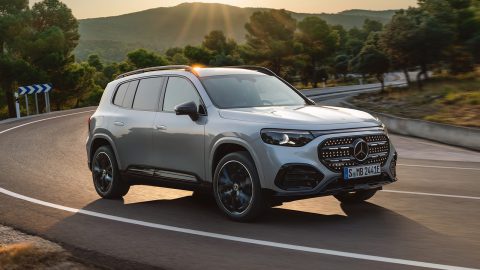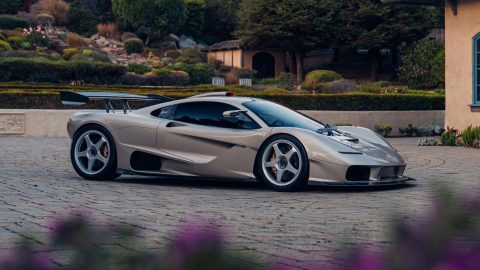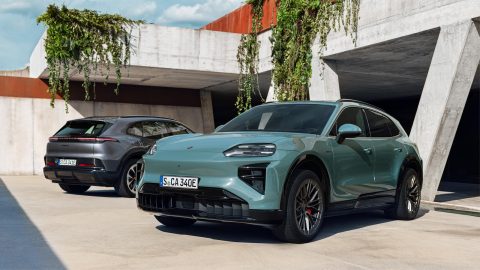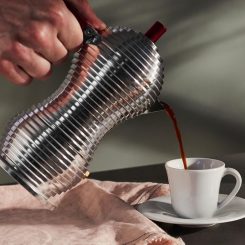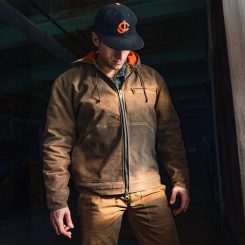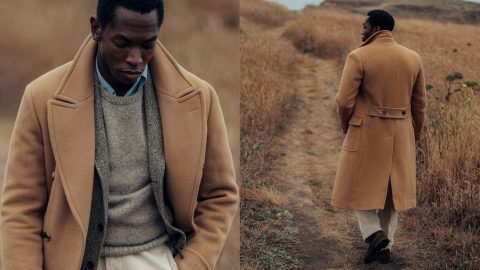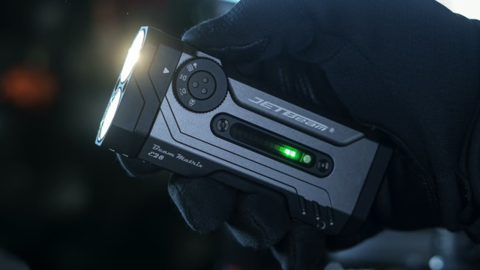Car hunting is a popular segment in most automotive focused TV shows. These shows usually feature a charismatic host searching the countryside for vintage vehicles locked away in forgotten rustic buildings. They find a vehicle covered in dust, drag it back to a shop, drop in a new car battery, pour fresh gasoline down the engine, and fire it up without issue. Few people have lives worthy of being televised, but Ryan Richards is one of those people. He is a real-life car hunter.
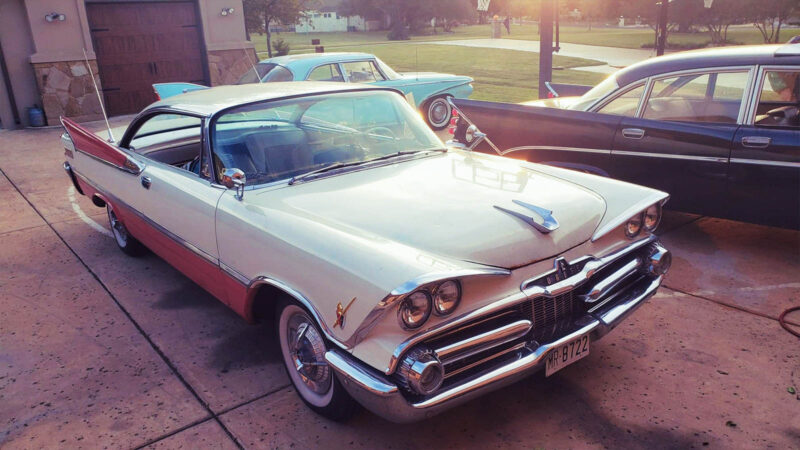
A big part of his life is traveling across the nation, searching for chrome like a prospector during the California gold rush. I recently had the opportunity to visit Richards in person in order to get a glimpse of his daily life as a car hunter. Car hunting for Richards started as a hobby that has slowly evolved into a lifestyle in the last five years.
When I arrived at Richards’ home in somewhere, Texas, the driveway looked like present-day Cuba with chrome fins gleaming in the early setting sun. I should point out that while he is a fan of all vehicles, Richard holds a special torch for American cars built from 1954 to 1964. Those are the cars he keeps on his radar to save from scrap, demolition derbies, and Hellcat V8 engine swaps.
When I arrived at Richards’ home in somewhere, Texas, the driveway looked like present-day Cuba with chrome fins gleaming in the early setting sun.
After a friendly welcome, we walked over to the back of the house, where he and his three roommates kept most of their cars. The smell of weather-worn vinyl hung in the air as we approached the wooden gate about to enter a vehicular treasure chest. Autumn leaves carried by the wind slide across rust-coated paint. Hubcaps littered the ground with various antique bits of sheet metal and chrome trim. This wasn’t a salvage yard. It was salvation.
The first question I asked Richards was how one gets started on a car hunting endeavor, his response was simple. “You have to be ready to travel.” Start with having a cash reserve or four to five thousand dollars at arm’s reach. If the vehicle is located nearby, be ready to shake hands the same day you make an offer. Access to a truck capable of pulling a trailer big enough to haul a vehicle will get plenty of use. Richards is only 28-years old, but this simple formula has led to an estimated 200 car titles passing through his hands since he started actively hunting for vintage cars.
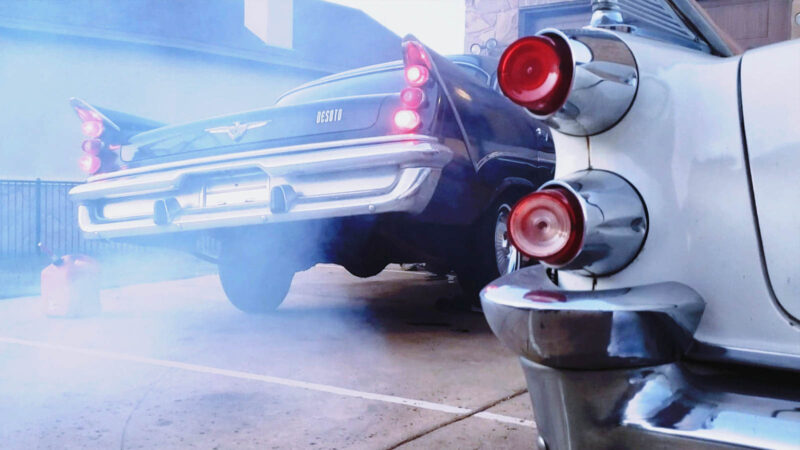
During my afternoon visit, I was able to witness Richards, and his car hunting crew, work on his latest acquired vehicle – a 1959 DeSoto Firedome sedan. A car he hauled all the way from Minnesota just before the first snow of the year. The car had been stored away for nearly half a decade after the previous owner had passed away. Richards purchased the vehicle from the owner’s widow, promising her the car would be back on the road where it belonged.
Part of the car hunting experience is learning the story of how these cars lived before you being the next caretaker.
Part of the car hunting experience is learning the story of how these cars lived before you being the next caretaker. According to Richards, the previous owner was a De Soto car collector who frequently drove the Firedome as his personal vehicle. This car was uniquely optioned. De Soto was a premium brand under Chrysler, yet this car was ordered new in ’59 with no power steering or power brakes.
Richards and crew worked like a veteran pit crew around the old black sedan going through the usual steps: check and replace fluids, fill the tank with fresh gasoline, and turn the ignition key to see what happens. After they established that the brakes technically worked and all the lights, including turn signals, beamed when ordered, the time came to fire the 61-year-old V8 engine for the first time in half a decade.
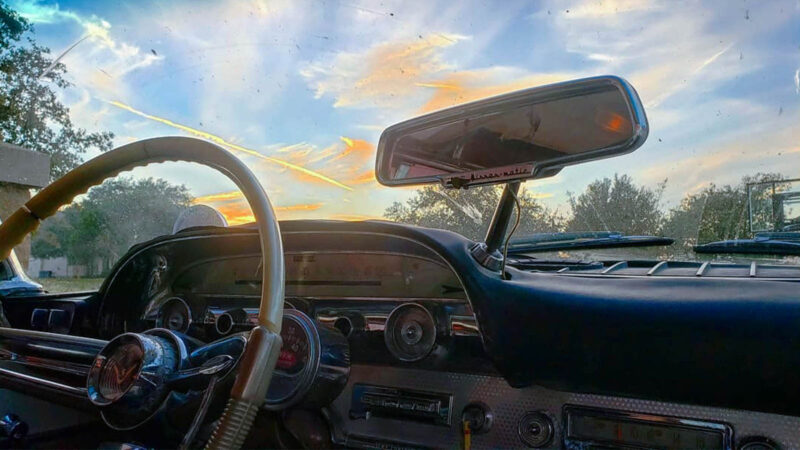
The ignition sparked, and the Firedome sputtered and groaned before coughing up several years of rotten gasoline in a thick cloud of white smoke. After two minutes of running, the engine cleared its throat and idled smoothly. One hood slam later, we piled into the spring-loaded bench seats and went on a test drive.
It is important to address why late 1950s American cars are so significant in popular history. Usually, one thinks of Elvis Presley swinging his hips while holding a glass bottle of Coke singing about seeing the USA in a Chevrolet. In reality, this brief era of American history was way more than sock-hops and pompadour hairstyles.
The ignition sparked, and the Firedome sputtered and groaned before coughing up several years of rotten gasoline in a thick cloud of white smoke.
In 1953, the Korean War had officially ended after a three-year conflict. In 1955, American military advisors were arriving in Vietnam the same year The Civil Rights movement started. Senator Joseph McCarthy was forcing people to name names until he died in 1957. By 1959, Fidel Castro had taken Cuba. Plus, the whole decade was spent living with constant fear of nuclear war as we entered a space race with the former USSR.
With all of this conflict, social tension, and turmoil, the only outlet was art. Historically speaking, America has never been great, politically. However, in terms of automotive design, cars from 1954 to 1964 represent a unique era where inspiration was drawn from fear of mushroom clouds, the devil’s music, and the bittersweet feeling of winning a second “war to end all wars” only to be involved in three separate conflicts less than 20 years later since then.
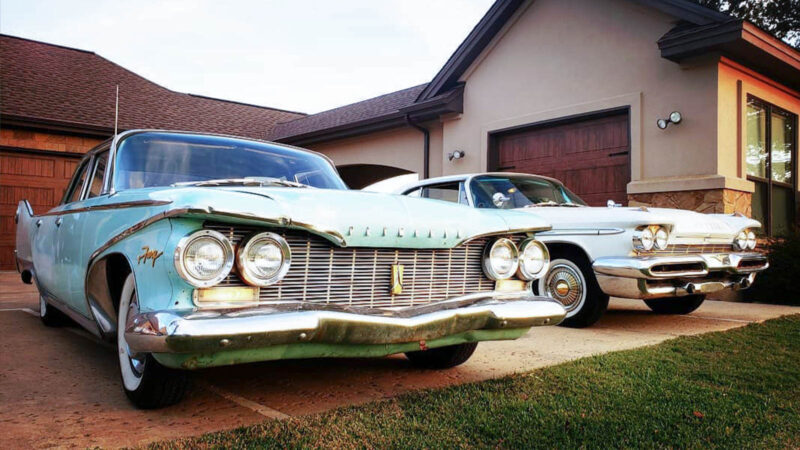
This era of automotive history witnessed a wholly redesigned model every year. Compared to today, when a vehicle can go ten years without changing beyond subtle updates. Ford, Chevy, Chrysler, and brands under them like Buick, De Soto, Pontiac, Oldsmobile, Mercury, Lincoln, Dodge, etc. All of them were cranking out new designs annually. Creativity was behind the wheel, and Americans saw its benefits in the parking lot with rows of visually striking vehicles. In 1960, no one was mistaking a Buick for a Chevrolet.
Each car from this era is a rolling postmodern art gallery. A person could spend an hour looking at every detail. From the chrome often trim unique to that specific model and year, the dashboard layout with buttons, toddles, and switches that felt heavy to the touch, and of course, the Buck Rogers tail fins shaped to look like brake light rocket boosters. Best of all, these cars drove as they looked – powerfully. Equipped with an ashtray big enough to be an urn, you sat behind a steering wheel the size of a New York-style pizza in control of a low-stress V8 ready to experience the 41,000 miles of newly constructed interstate highways. Hit the gas and take off.
Each car from this era is a rolling postmodern art gallery. A person could spend an hour looking at every detail.
Then, The Beatles aired on the Ed Sullivan show in 1964, and immediately all these cars went out of style. The moment Baby Boomers came of age these Marilyn Monroe full-bodied sedans were booted to Squaresville, USA – uncool. By the 1970s, these once interstate kings had been demoted to peasants. They were seen as old clunkers driven by the poor, the old, and the weird. Folks old enough to remember can often tell you stories about people taking grandma’s garaged Ford Edsel straight to the junkyard after passing away because they didn’t have any other use for it. Most of these cars ended up in demolition derby arenas to fight to the death before being finished off by the crusher. It took several decades for nostalgia to rekindle sentiment for these cars. Now, young people like Richards want to preserve them in the condition they were in during their hey-day.
Riding in the 60-year-old DeSoto presented a surreal contrast of fragility and indestructibility. You know these cars are tough because they’ve lasted this long, while at the same time being painfully aware that at any moment, a late model Honda will destroy you, and only you, in an impact. It was hard not to think of a beautiful chrome interior trim piece impaling my face when looking out the passenger side window and seeing a herd of bubbled shaped crossover SUVs with faces illuminated by phone screens.
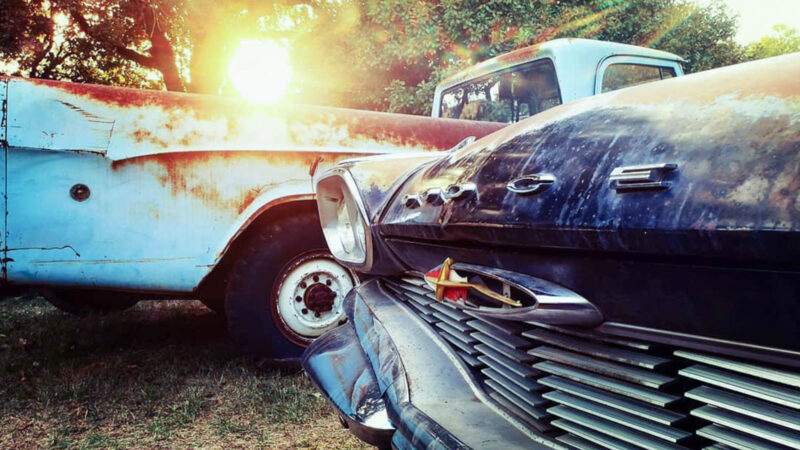
Vibrations from the old V8 drowned all sense of worry as it pushed this box of steel and glass past 50 mph. You feel the suspension sway as it gently rocks you in the patterned upholstery bench seats that are soft and springy like great aunt Martha’s living room sofa. You become intoxicated by the sensation of world power. Nothing can stop you behind the wheel of these steel-framed finned sharks. They don’t build them like they used to.
Like any real treasure hunter, Richards keeps the best finds for himself. In recent years, Richards has earned an impressive collection of desirable cars. A 1959 Dodge Custom Royal, 1958 Dodge Regal Lancer, 1959 DeSoto Adventurer, and a recently acquired 1960 Plymouth Fury are just a few of his prized automobiles.
Like any real treasure hunter, Richards keeps the best finds for himself. In recent years, Richards has earned an impressive collection of desirable cars.
Each car has a story worthy of its own article. For example, the ’60 Plymouth Fury was brought, owned, and driven by one family until it ended up in the hands of another car hunter who planned to strip the car for parts. Upon hearing this, Richards immediately made an offer on the Fury and purchased it. He then drove the Plymouth from Santa Fe, New Mexico, back home to South Texas. The 60-year-old car never skipped a beat and is in remarkable original condition.
Ryan Richards, and his friends, are a prime example that the future of classic cars rests in capable hands. That there are still plenty of people under 30 who can rebuild carburetors and switch ignition points. More than you think.
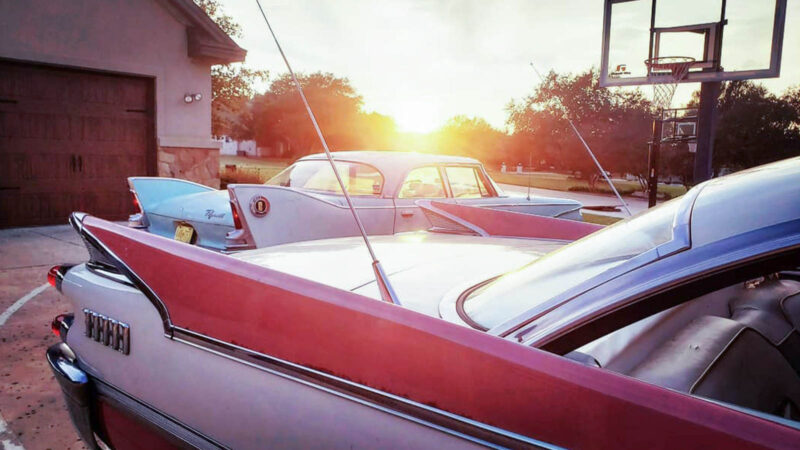
You can follow Richards on Instagram and see his weekly road trips as he tracks down patina diamonds in the rough all over America. You may end up buying a car from him if the opportunity arises as Richards’ goal after saving a classic car is to find the right home that will maintain and enjoy these vehicles for what they are. For Richards, adding new engines and suspension components to a classic car is like painting eyeliner on the Mona Lisa.
They’re only original once.

